Dacia Duster vs Mazda CX-30 – Differences & prices compared
Costs and Efficiency:
When it comes to price and running costs, the biggest differences usually appear. This is often where you see which car fits your budget better in the long run.
Dacia Duster has a significantly advantage in terms of price – it starts at 16300 £, while the Mazda CX-30 costs 25200 £. That’s a price difference of around 8957 £.
Fuel consumption also shows a difference: Dacia Duster manages with 4.70 L and is therefore clearly perceptible more efficient than the Mazda CX-30 with 5.70 L. The difference is about 1 L per 100 km.
Engine and Performance:
Under the bonnet, it becomes clear which model is tuned for sportiness and which one takes the lead when you hit the accelerator.
When it comes to engine power, the Mazda CX-30 has a a bit edge – offering 186 HP compared to 158 HP. That’s roughly 28 HP more horsepower.
In acceleration from 0 to 100 km/h, the Mazda CX-30 is a bit quicker – completing the sprint in 8.30 s, while the Dacia Duster takes 9.40 s. That’s about 1.10 s faster.
In terms of top speed, the Mazda CX-30 performs a bit better – reaching 204 km/h, while the Dacia Duster tops out at 180 km/h. The difference is around 24 km/h.
There’s also a difference in torque: Mazda CX-30 pulls barely noticeable stronger with 240 Nm compared to 230 Nm. That’s about 10 Nm difference.
Space and Everyday Use:
Beyond pure performance, interior space and usability matter most in daily life. This is where you see which car is more practical and versatile.
Both vehicles offer seating for 5 people.
In curb weight, Dacia Duster is hardly perceptible lighter – 1377 kg compared to 1455 kg. The difference is around 78 kg.
In terms of boot space, the Dacia Duster offers somewhat more room – 517 L compared to 430 L. That’s a difference of about 87 L.
In maximum load capacity, the Dacia Duster performs slightly better – up to 1609 L, which is about 203 L more than the Mazda CX-30.
When it comes to payload, Mazda CX-30 hardly perceptible takes the win – 496 kg compared to 453 kg. That’s a difference of about 43 kg.
Who comes out on top?
Overall, the Dacia Duster shows itself to be has the upper hand and secures the title of DriveDuel Champion.
It convinces with the more balanced overall package and proves to be the more versatile choice for everyday use.
Costs and Consumption
View detailed analysis
Engine and Performance
View detailed analysis
Dimensions and Body
View detailed analysis
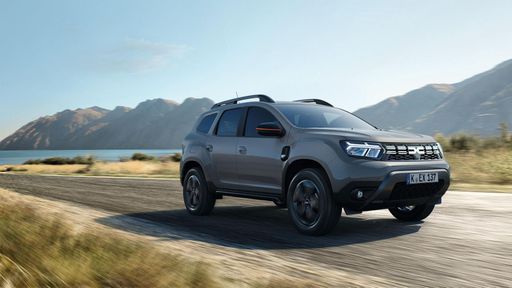 @ Dacia / Renault Group Media
@ Dacia / Renault Group Media
Dacia Duster
Dacia Duster
The Dacia Duster is a no-nonsense compact SUV that delivers rugged practicality and surprisingly comfortable everyday driving without fuss. It might not win any beauty contests, but its honest design, easy-to-live-with cabin and tough attitude make it a smart pick for buyers who want reliable transport without luxury frills.
details @ Dacia / Renault Group Media
@ Dacia / Renault Group Media
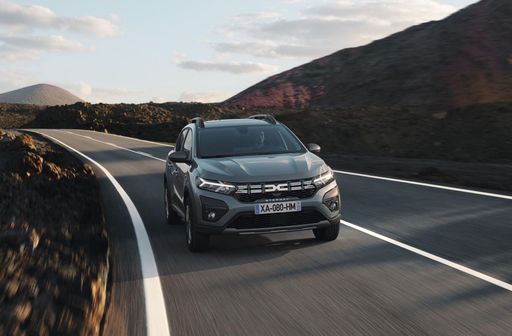 @ Dacia / Renault Group Media
@ Dacia / Renault Group Media
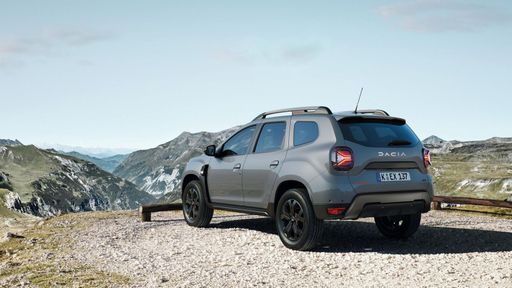 @ Dacia / Renault Group Media
@ Dacia / Renault Group Media
 @ Dacia / Renault Group Media
@ Dacia / Renault Group Media
Mazda CX-30
The Mazda CX-30 blends sleek coupe-like lines with the practicality of a compact crossover, feeling more premium than its price tag suggests. It’s a joy to drive for anyone who likes a taut chassis and an interior that treats daily commutes like a small luxury escape.
details @ Mazda Motor Corporation
@ Mazda Motor Corporation
 @ Mazda Motor Corporation
@ Mazda Motor Corporation
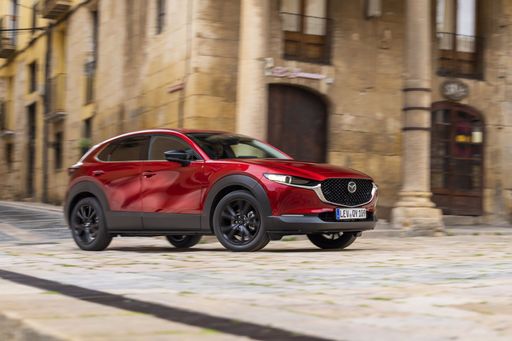 @ Mazda Motor Corporation
@ Mazda Motor Corporation
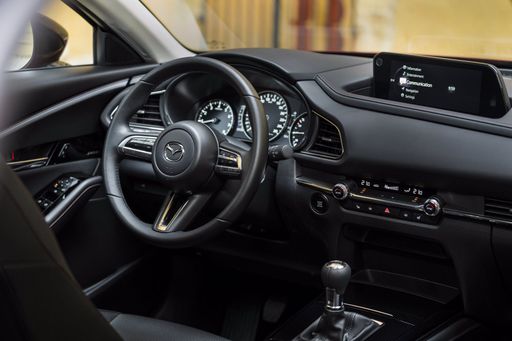 @ Mazda Motor Corporation
@ Mazda Motor Corporation
 @ Dacia / Renault Group Media
@ Dacia / Renault Group Media
|
 @ Mazda Motor Corporation
@ Mazda Motor Corporation
|
|
|
|
Costs and Consumption |
|
|---|---|
|
Price
16300 - 24900 £
|
Price
25200 - 36800 £
|
|
Consumption L/100km
4.7 - 7.5 L
|
Consumption L/100km
5.7 - 6.6 L
|
|
Consumption kWh/100km
-
|
Consumption kWh/100km
-
|
|
Electric Range
-
|
Electric Range
-
|
|
Battery Capacity
0.60 kWh
|
Battery Capacity
-
|
|
co2
107 - 124 g/km
|
co2
129 - 148 g/km
|
|
Fuel tank capacity
50 L
|
Fuel tank capacity
48 - 51 L
|
Dimensions and Body |
|
|---|---|
|
Body Type
SUV
|
Body Type
SUV
|
|
Seats
5
|
Seats
5
|
|
Doors
5
|
Doors
5
|
|
Curb weight
1377 - 1455 kg
|
Curb weight
1455 - 1587 kg
|
|
Trunk capacity
348 - 517 L
|
Trunk capacity
422 - 430 L
|
|
Length
4343 mm
|
Length
4395 mm
|
|
Width
1813 mm
|
Width
1795 mm
|
|
Height
1656 - 1659 mm
|
Height
1540 mm
|
|
Max trunk capacity
1414 - 1609 L
|
Max trunk capacity
1398 - 1406 L
|
|
Payload
450 - 453 kg
|
Payload
458 - 496 kg
|
Engine and Performance |
|
|---|---|
|
Engine Type
Petrol MHEV, Full Hybrid, LPG
|
Engine Type
Petrol MHEV
|
|
Transmission
Manuel, Automatic
|
Transmission
Manuel, Automatic
|
|
Transmission Detail
Manual Gearbox, Automated Manual, Dual-Clutch Automatic
|
Transmission Detail
Manual Gearbox, Automatic Gearbox
|
|
Drive Type
Front-Wheel Drive, All-Wheel Drive
|
Drive Type
Front-Wheel Drive, All-Wheel Drive
|
|
Power HP
115 - 158 HP
|
Power HP
140 - 186 HP
|
|
Acceleration 0-100km/h
9.4 - 11.6 s
|
Acceleration 0-100km/h
8.3 - 10.3 s
|
|
Max Speed
180 km/h
|
Max Speed
191 - 204 km/h
|
|
Torque
190 - 230 Nm
|
Torque
238 - 240 Nm
|
|
Number of Cylinders
3 - 4
|
Number of Cylinders
4
|
|
Power kW
84 - 116 kW
|
Power kW
103 - 137 kW
|
|
Engine capacity
1199 - 1789 cm3
|
Engine capacity
1998 - 2488 cm3
|
General |
|
|---|---|
|
Model Year
2025
|
Model Year
2025
|
|
CO2 Efficiency Class
D, C
|
CO2 Efficiency Class
D, E
|
|
Brand
Dacia
|
Brand
Mazda
|
What drivetrain options does the Dacia Duster have?
The Dacia Duster is offered with Front-Wheel Drive or All-Wheel Drive.
The prices and data displayed are estimates based on German list prices and may vary by country. This information is not legally binding.
